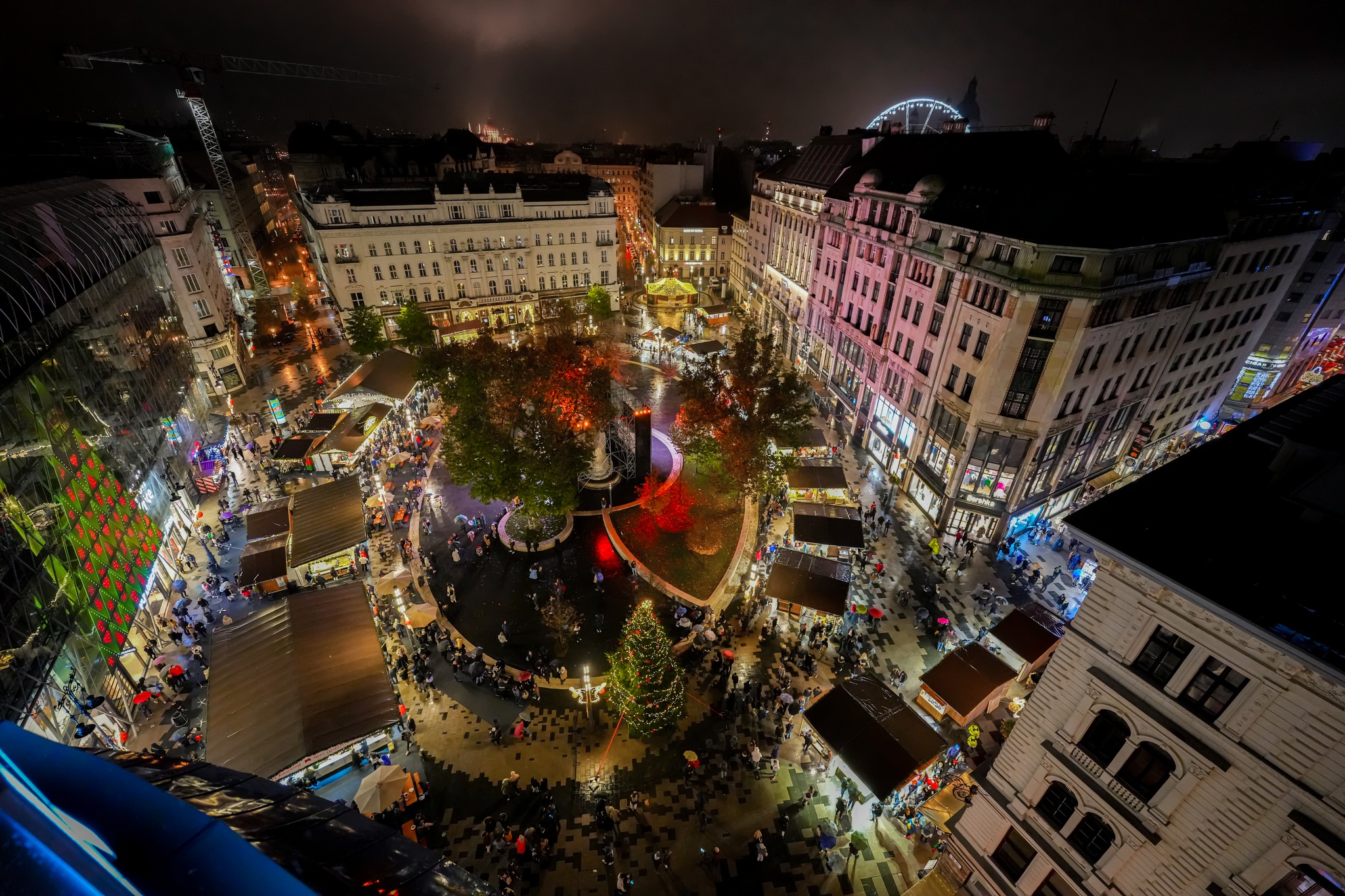
Budapest's most decorated Christmas market awaits visitors with a beautiful winter wonderland until January 1st.Continue reading

Experiential spending in Europe, emerging during the pandemic, continues to be a feature. Christmas markets are a major attraction, attracting 800,000 foreigners to Budapest alone. End-of-year travel is also a priority, with sunny beaches and budget cities being the main destinations.
Travel, electronics, and fashion are setting the holiday spending trends across Europe this year. In Hungary, retail sales are expected to grow by 7.7 percent over the festive season.
Across Europe, experiential spending has been a feature since the pandemic.
End-of-year travel will therefore play a key role again this year.
Last year, the average total cost of Christmas spending and holiday preparations in Hungary was HUF 118,000 (EUR 285), of which gifts accounted for HUF 47,000 (EUR 113). This year’s figures are not yet available, as we are still in the run-up to the holiday season, but Viktória Németh, a macroeconomic analyst and foreign policy expert at the Oeconomus Economic Research Foundation, also expects retail sales to grow at a rate above the annual average by the end of the year.
The Christmas effect is very strong, Németh pointed out to Világgazdaság, adding that it was no coincidence that the retail balance, which had been declining for several months last year, turned positive for the first time in December. The start of Christmas shopping is increasingly preceding the Advent period, with Christmas products appearing in shops as early as late October or early November, and the classic Christmas fairs opening as early as mid-November.

Photo: Facebook/Advent Bazilika
Christmas is still a family holiday, but nowadays, visiting markets has become part of the festive season. The Christmas market tradition dates back to medieval German-speaking areas, but has spread and evolved across Europe. Christmas fairs are not just places to shop, as the main motivation for visitors include:
“The economic impact of Christmas markets is not negligible, and their importance in tourism is also growing,” the expert stressed. The Christkindlmarkt, held in front of the city hall, is Vienna‘s most famous fair, with around three million visitors, a clear indication of how popular it is.
Outside of Vienna, the most visited fair in the region is the one in front of St. Stephen’s Basilica in Budapest, which has won the title of Europe’s Best Christmas Market in the European Best Destinations survey four times.
The promotional value of the title is clear to see, as in previous years around 800,000 tourists have come to Budapest specifically for the Christmas markets.
The fair on Vörösmarty Square is also very popular, while the Prague fair attracts 300,000 visitors.
Although they have a centuries-old tradition, it is only in the last decade or two that Christmas fairs have really started to proliferate. In the UK, for example, there was a spectacular explosion between 2007 and 2017, when the number of Christmas markets rose from 30 to more than 100.
No similar survey has yet been carried out in Hungary, but it is clear that an increasing number of municipalities feel it is important to have community events where local people can meet and even attract visitors.

Photo: Facebook/Vörösmarty Classic Xmas
As much as 50 percent of craftsmen’s turnover is linked to the Christmas period,
thus these events are very important for small local businesses, as well as for visitors, who especially like to buy local products.
There is also a spillover effect: visitors to the Christmas fairs increase the turnover of nearby cafés and other shops. With the rise of digitalization, consumers are also more efficient at hunting for bargains and planning more consciously.
Hungarians are spending more carefully and savings are more important. At the same time, price sensitivity and action awareness are very pronounced. Hungarians are also increasingly keen and used to traveling, even during the Christmas period. The tourism impact of the holiday is multi-faceted:
Many people are visiting loved ones or going on holiday, but there is also a popular “shop-cation” trend, where consumers travel specifically for shopping. This year’s hot destinations include sunny beaches in Morocco, Portugal, and Spain, as well as more budget-friendly winter getaways such as Hungary and Poland.
Via Világgazdaság; Featured image via Facebook/Vörösmarty Classic Xmas